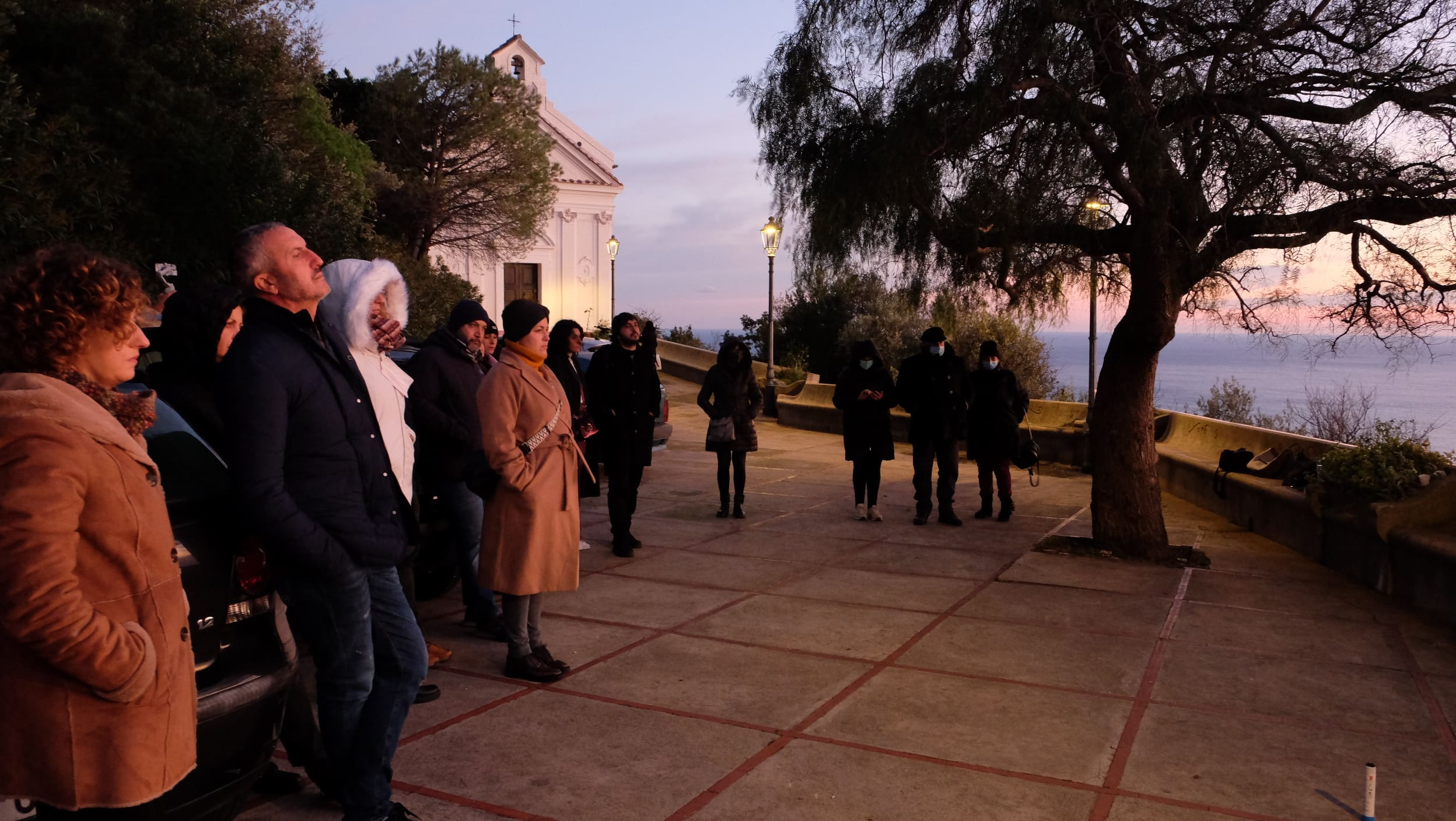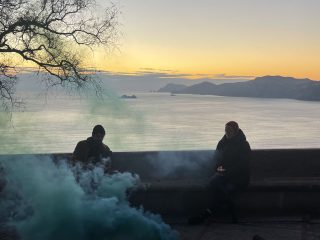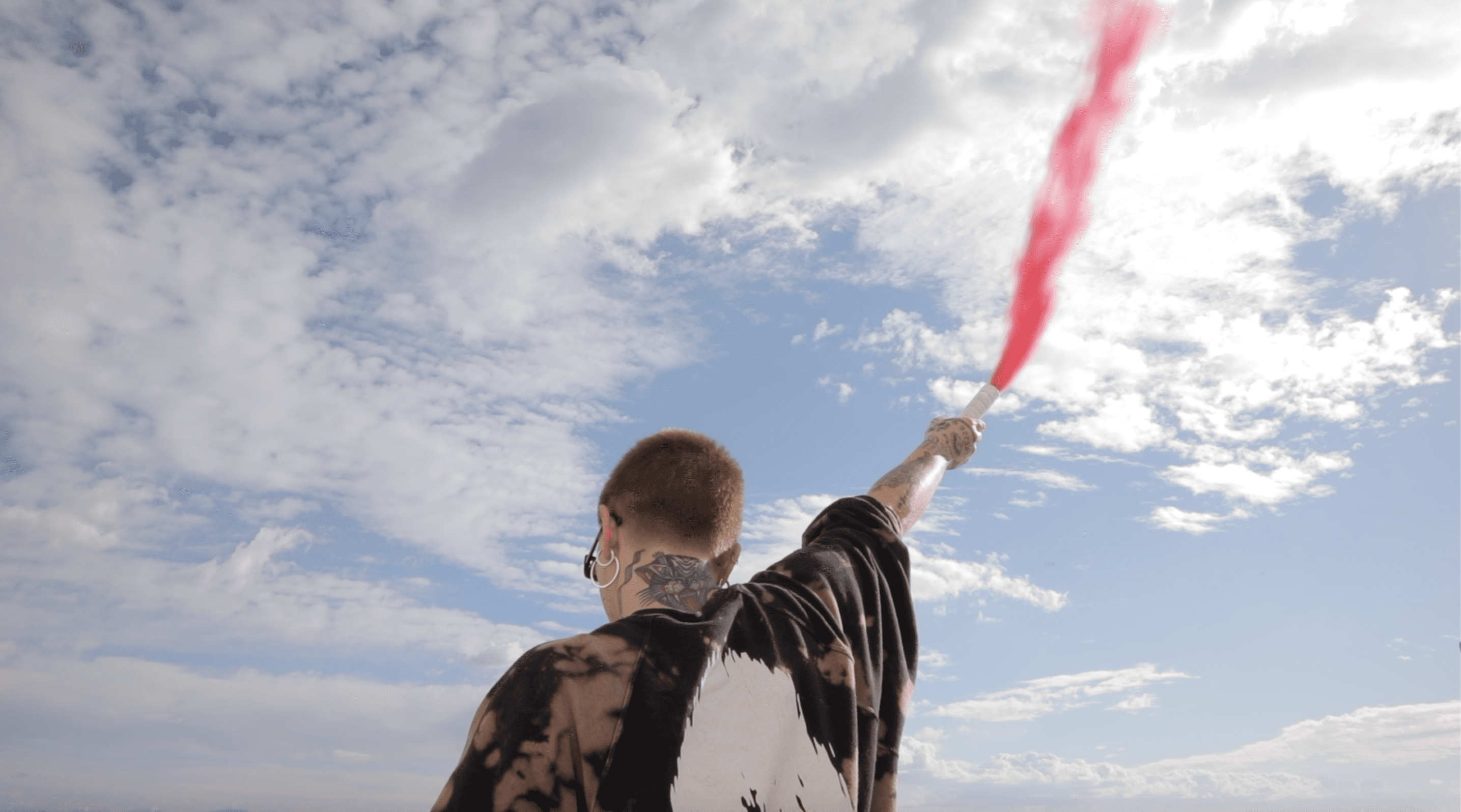
A book has been written from Marea 21, the residency program that hosted the visual artist and writer Giulia Crispiani and the curator and independent researcher Michele Bertolino
It is a tribute to the book "Sunrise and Sunset at Praiano" by Sol LeWitt published in 1980, a collection of medium format photos of literal observation of the sky of Praiano, with its infinite sunrises and sunsets that are different every day. A book that "will celebrate all that is oral and will welcome within it the moods we have lived here, from the isolation connected to seasonality, to the generosity of the territory."
The book written by Giulia and Michele is calledAlbe e tramonti di PraianoCompared to Sol LeWitt's book, the preposition "at" becomes "in" because in "Praiano, time is a slow time, a slowness of both the clock and the physical that makes you lose your bearing. The idea of the book is to pay homage to the observatory practice of the sky and the sea and to give instructions, typical methods of conceptual art.
It is a wave motion, a constantly moving tide. The book discusses cosmology, ethics, care, bonds, constellations, affective politics, and psychogeography. We don't want to put a point on the cartography of this place; we want to open a dialogue with the territory, interacting with it ».
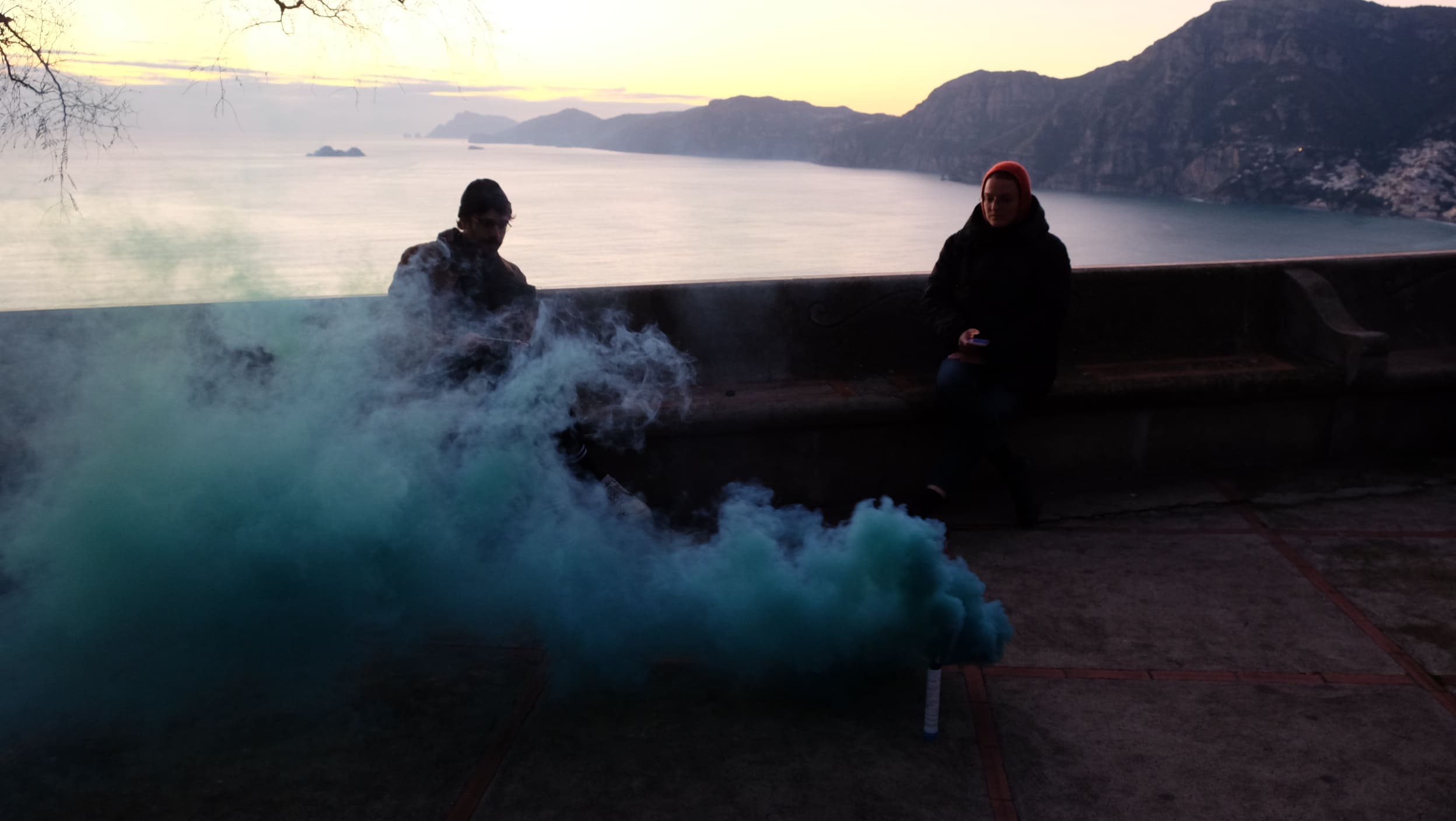
Smoke signals: declarations of love between Torre Asciola and Casa L'Orto
Starting from the territory and from the meetings during Marea 21, Giulia and Michele idea was to map the environment from an emotional point of view; tracing those places they discovered was essential for them and the community. «We thought about the places where we went to watch the sunset or to listen to the sea to connect them with light signals or colored smoke, to put them in communication.»
In their emotional geography, they identified the Torre Asciola di Praiano and Casa L'Orto, Carol and Sol LeWitt's home during the month in residence. From these two places, visually communicating, smoke signals have been launched, like love letters scattered throughout the territory.
Because to meet in these places, we have to follow instructions. There is an expanded community that, especially in winter, struggles to encounter due to the weather conditions. Colored smoke signals, even if ephemeral, were a crucial communication. It means that two people, albeit in two different places, if they have the same intentions and agree on times and positions, they become one body ".
“Poesia di Paolo” di Giulia Crispiani
Il mare come sfondo, il mare come corrente d’un pensiero, il mare come inafferrabile sfumatura. Il mare come “pausa dal dolore della vita”.
Il mare come respiro. Il mare come “non devo”.
Il mare come sfondo, il mare come corrente d’un pensiero, il mare come inafferrabile sfumatura. Il mare come “pausa dal dolore della vita”.
Il mare come respiro. Il mare come “non devo”.
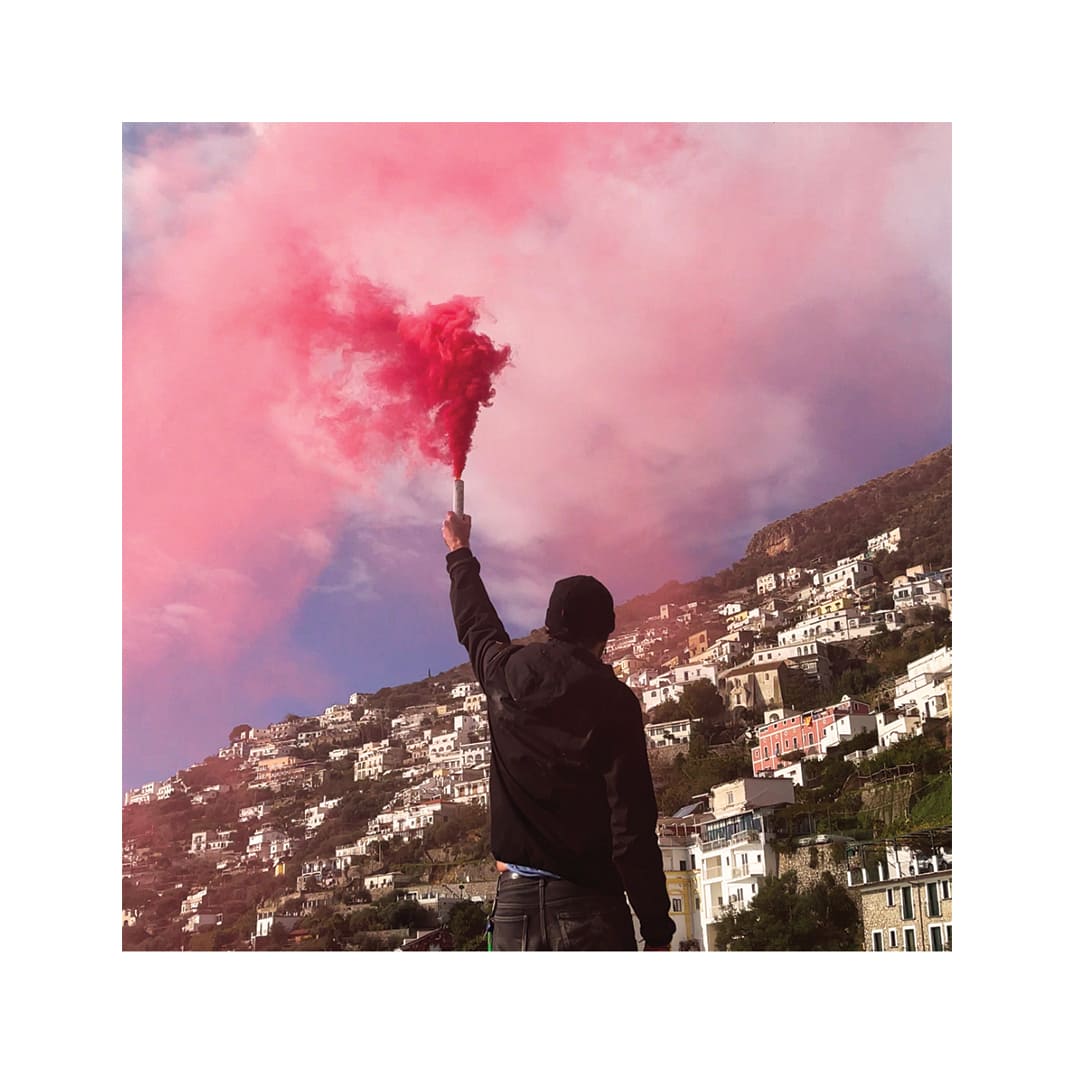
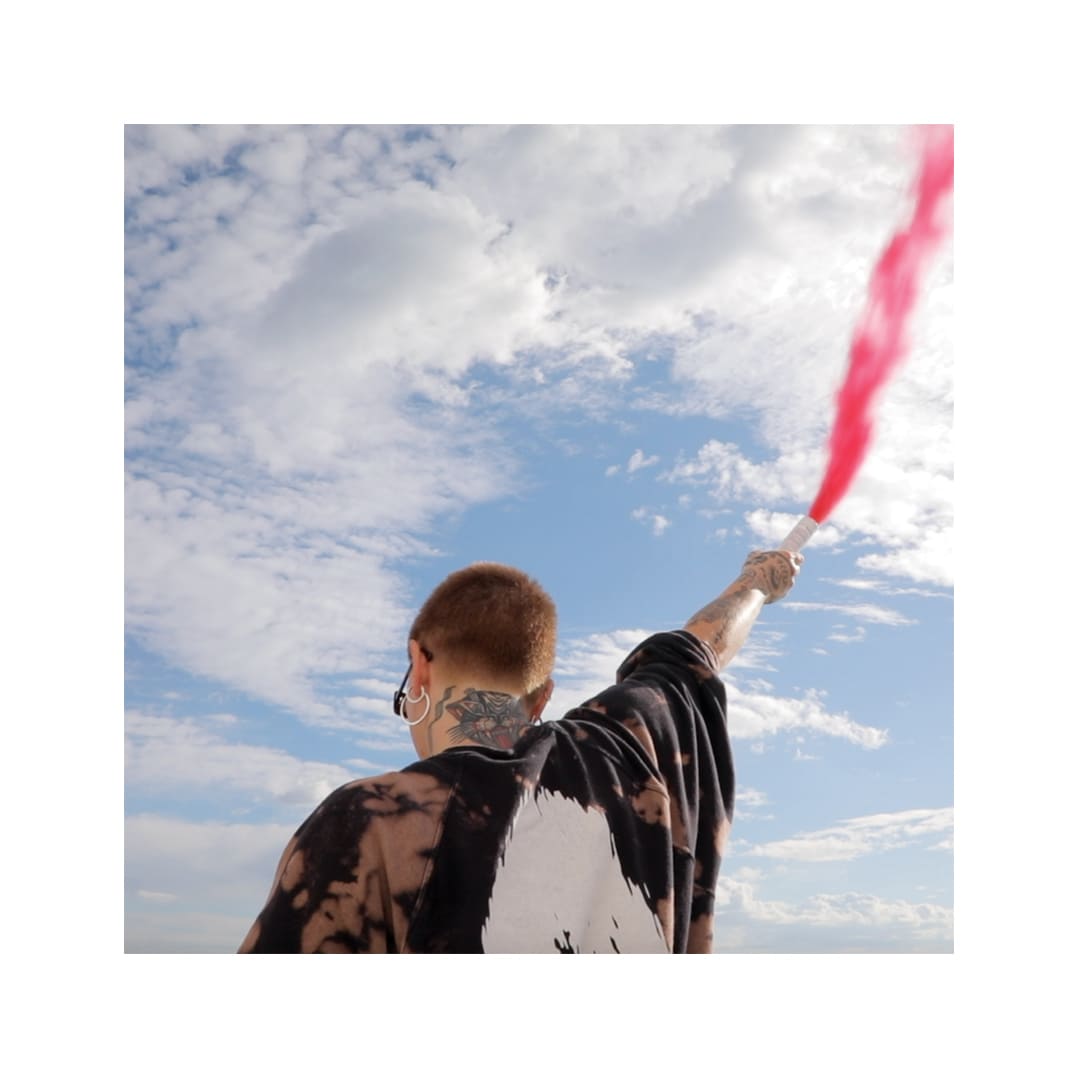
Smoke signals: declarations of love between the "cave that slams under the bed" and La Poderosa
“Poesia di Sandra” di Giulia Crispiani
Ci hanno detto di non arrivare fino a giù, perché a giudicare da come sbatteva la grotta stamattina sicuramente c’era il mare di sotto – ovvero, un mare che sembra piatto da sopra, ma quando incontra la costa ci s’infrange.
In effetti ogni paio di minuti il mare gonfio cade in discesa e trovando lo scoglio, esplode e si solleva, come per provare ad oltrepassarlo.
L’aria è il solo limite del mare. Un peso altrettanto denso sopra, un colore simile, un corpo espanso grande quanto tutto il pianeta.
Ci hanno detto di non arrivare fino a giù, perché a giudicare da come sbatteva la grotta stamattina sicuramente c’era il mare di sotto – ovvero, un mare che sembra piatto da sopra, ma quando incontra la costa ci s’infrange.
In effetti ogni paio di minuti il mare gonfio cade in discesa e trovando lo scoglio, esplode e si solleva, come per provare ad oltrepassarlo.
L’aria è il solo limite del mare. Un peso altrettanto denso sopra, un colore simile, un corpo espanso grande quanto tutto il pianeta.
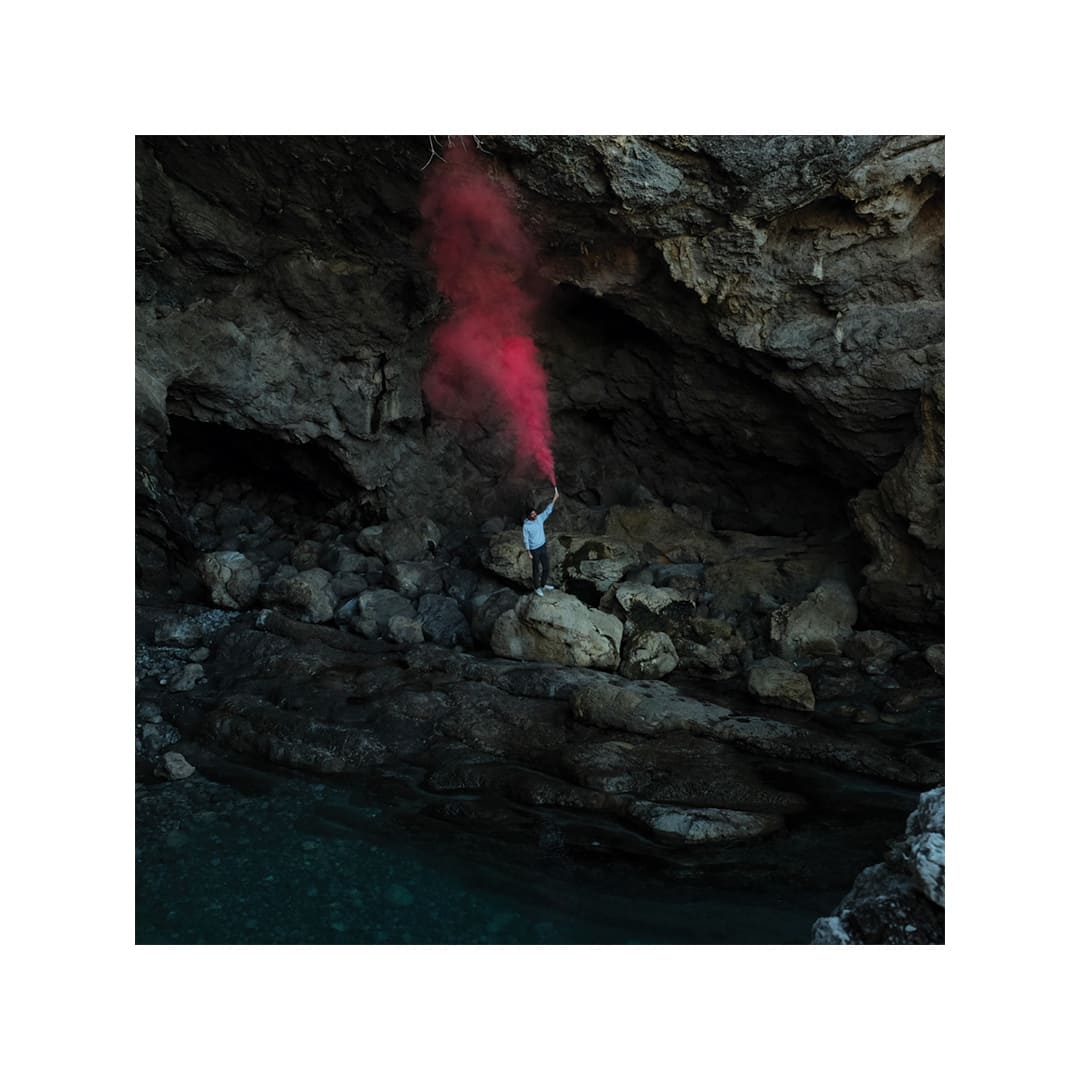
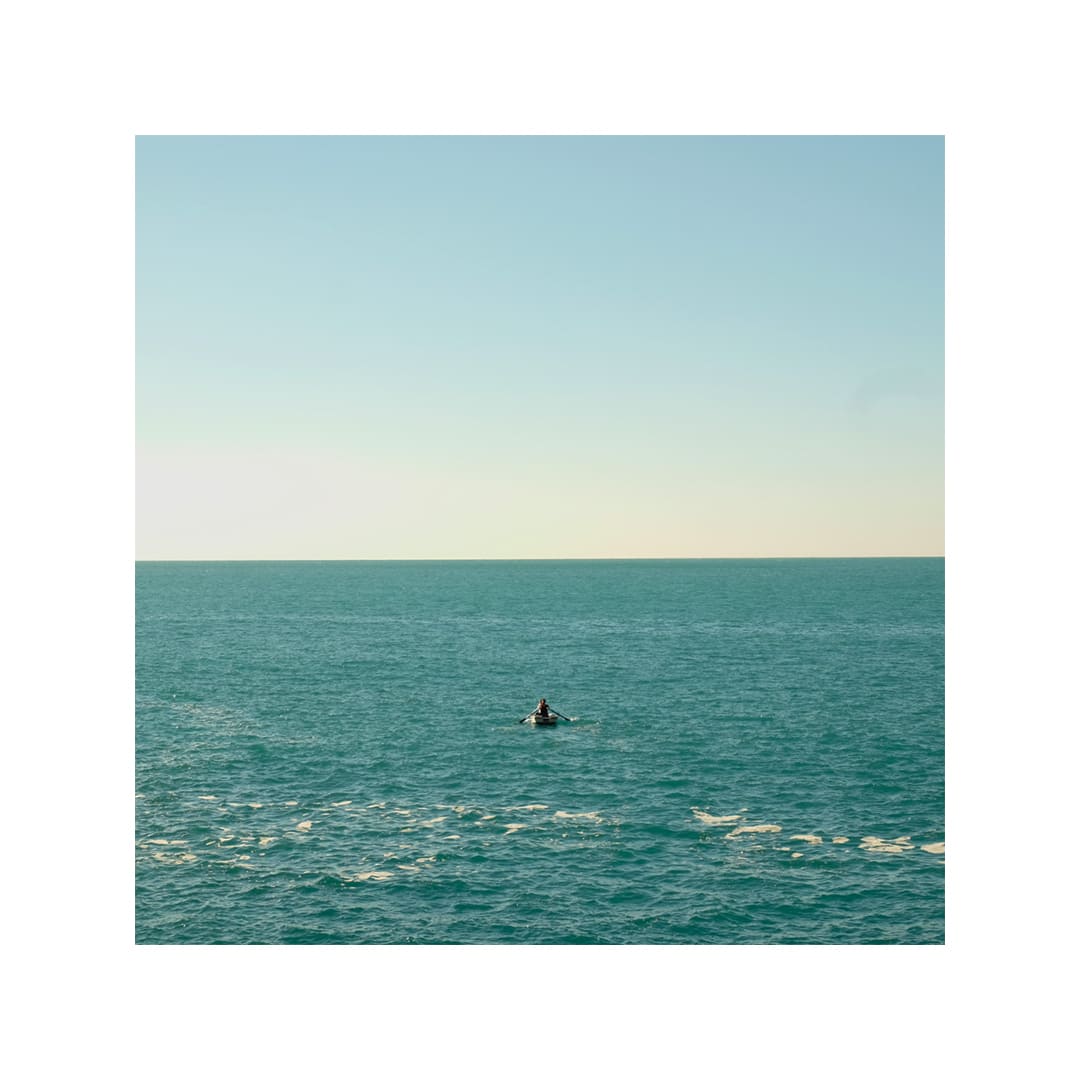
Smoke Signals: "Tramonto a Costantinopoli"
State ancora respirando? Questa è un’offerta per la nostra evoluzione, affinché, invece di continuare a riproporre schiavitù, trappole, separazione, dominazioni che rendono la nostra atmosfera asfissiante, ci sia la possibilità di mettere in pratica un altro modo di respirare.
Non so come sarà, ma so che le balene hanno la meravigliosa capacità di non annegare. Così, guardo a loro come maestre, mentori, guide. E guardo a voi come anime che respirano insieme. Noi, che evolviamo tutte insieme
da Undrowned. Black Feminist Lessons
from Marine Mammals di Alexis Pauline Gumbs, 2020
da Undrowned. Black Feminist Lessons from Marine Mammals di Alexis Pauline Gumbs, 2020
